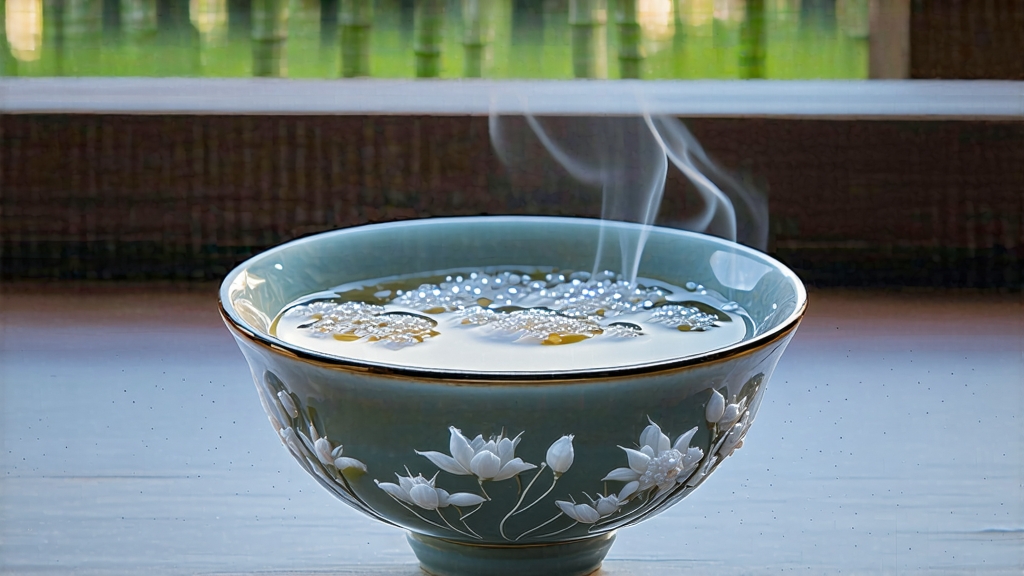
White tea is the most minimally handled of all China’s six great tea families, yet within its restrained palette lies a spectrum of nuance that can astonish even seasoned tasters. Among the three orthodox grades—Silver Needle, White Peony, and Shou Mei—Bai Hao Yin Zhen, literally “White-Hair Silver Needle,” sits at the apex: a tea composed entirely of unopened buds, each sheathed in silvery down so dense it resembles frost captured at daybreak. To understand Yin Zhen is to witness how Chinese artisans transform a single, perfect bud into a liquor that smells of mountain air after rain and finishes with the soft sweetness of dried apricot.
History whispers rather than shouts where Yin Zhen is concerned. The first written record appears in the 1796 edition of the Fuzhou Gazetteer, noting that “imperial tribute of white buds” left the coastal county of Fuding each spring, wrapped in silk and escorted by mounted couriers. Locals insist, however, that monks on Taimu Mountain were plucking and sun-drying buds during the Song dynasty, five centuries earlier, pressing them into cakes for travel along the Tea-Horse Road. Whatever its exact birthdate, Yin Zhen’s reputation crystallized during the late Qing when Dowager Empress Cixi—herself a native of Fujian—reportedly drank nothing else after her sixtieth birthday, believing the tea cooled internal heat and preserved the complexion. European botanists who followed British trade missions in the 1890s carried Yin Zhen back to London, where it was displayed at the Royal Horticultural Hall under the romantic label “China Silver Tips,” a name still used by some specialty importers today.
Geography is destiny for white tea. Authentic Yin Zhen is sourced from two micro-zones granted national origin protection: Fuding in northeast Fujian and Zhenghe in the province’s interior. Both counties sit just inland from the East China Sea, where subtropical humidity meets mineral-rich red granite soils. The Dabai (“Big White”) and Dahao (“Big Hair”) cultivars native to this littoral develop unusually plump buds—at least 2.5 cm long—stockpiling amino acids during cool spring nights and converting them into delicate, orchid-like aromatics. Farmers speak of a “three-cloud” rule: the bud must be picked on a morning when low clouds blanket the foothills, mid-level clouds filter sunlight, and high cirrus promise afternoon breeze. Such conditions slow transpiration, allowing the bud to retain moisture and its signature velvet.
Harvest lasts barely ten days, beginning when the tea bush’s first spring shoot reaches what locals call “sparrow’s tongue” length—longer than a rice grain but still unopened. Experienced pickers use a twist-pick motion that snaps the stem without bruising the base, dropping buds into shallow bamboo baskets lined with gauze. A full day’s work yields barely half a kilogram of fresh material, which will shrink by 75 % during processing. The most sought-after lots come from gardens situated between 400–600 m elevation, where overnight temperatures dip to 10 °C, encouraging a higher ratio of down to leaf tissue.
Crafting Yin Zhen is the art of doing almost nothing, but at precisely the right moment. The traditional route, still mandated for export-grade tea, is pure sun-withering. Buds are laid in single layers on water-reed trays and placed under translucent canopies that filter 30 % of UV light. Every forty minutes a master witherer—often a woman in her fifties whose forearms are tanned the color of almond shell—lifts each tray shoulder-high, rotating it 180° so the sun kisses every angle. The goal is to reduce moisture to 8–10 % without ever letting the temperature exceed 32 °C, a threshold above which the down yellows and the liquor becomes flat. Should clouds thicken or humidity spike, trays are whisked into a pine-drying room where charcoal embers smolder at a whisper, adding nothing but warmth. The entire cycle takes 48–60 hours, twice as long as any other white tea, during which enzymes convert catechins into the methylated flavonoids responsible for Yin Zhen’s cooling, mouth-watering finish.
Modern facilities mimic sun with solar-assisted tunnels, yet connoisseurs insist the moon matters. The most ethereal lots are withered during the waxing phase, when tidal pull—so the folklore